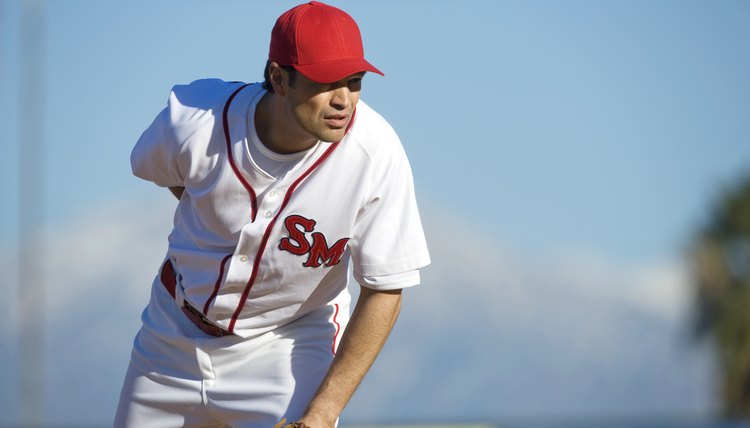Popping in the Shoulder of a Baseball Pitcher

When pitching a baseball, a significant amount of stress is placed on your shoulder joint. If your pitching style is not efficient, you pitch regularly throughout the year, or you have muscular imbalances around your shoulder joint, then you might start to hear and feel a pop in your shoulder. If this happens, you need to know the potential causes and correct treatment so you can begin rehabilitating the injury.
Causes
A shoulder pop that causes an acute, severe pain can be caused by a tear in the cartilage around the shoulder or a tear of one of the rotator cuff muscles -- a group of four muscles that support the shoulder joint. A shoulder pop that is accompanied by little pain or discomfort and comes on gradually is most likely caused by instability in the muscles and structures surrounding the shoulder. The shoulder joint is a ball and socket joint, and has little in the way of supporting structures, meaning that unless you strengthen it, you run the risk of it becoming unstable and leading to an injury.
Immediate Action and Rehabilitation
As soon as you feel the popping or pain, cease any pitching or upper body activities you are doing. Rest the shoulder, and apply ice treatment three to four times every day, for 20 minutes at a time. When the pain subsides, you should be able to start performing some light exercises on it to increase blood flow and get the joint moving again. If the pain isn't better after 72 hours, consult a doctor or physiotherapist.
Strengthening
Having stronger support around the shoulder will mean that you are less likely to injure it again. Perform two days of upper body strength training every week. Perform exercises such as chin-ups, rows, pushups, medicine ball throws, and dumbbell presses, while avoiding exercises which place the shoulder in a vulnerable position, like bench presses, upright rows, and Olympic lifts. Lift with perfect technique, and if you are unsure on any exercise, ask an experienced coach or trainer to help you.
Future Guidlines
If you do feel the onset of shoulder pain or light popping in the future, avoid pitching for a few days until the pain subsides. Aim to make your shoulders stronger and more mobile in the long run by weight training. You may also wish to reassess your pitching technique because a poor technique can often put the joint and muscles in more stressful positions, which can lead to an injury.
References
- T Nation; Shoulder Savers Part I; by Eric Cressey; May 9, 2006
- Comel JC, Nery RM, Garcia EL, et al. A comparative study on the recruitment of shoulder stabilizing muscles and types of exercises. J Exerc Rehabil. 2018;14(2):219-225. doi:10.12965/jer.1835198.599
- Rotator Cuff and Shoulder Conditioning Program. American Academy of Orthopaedic Surgeons. October 2012.
- Le HV, Lee SJ, Nazarian A, Rodriguez EK. Adhesive capsulitis of the shoulder: review of pathophysiology and current clinical treatments. Shoulder Elbow. 2017;9(2):75–84. doi:10.1177/1758573216676786
- Chan HBY, Pua PY, How CH. Physical therapy in the management of frozen shoulder. Singapore Med J. 2017;58(12):685-689. doi:10.11622/smedj.2017107
- Posture and Back Health. Harvard Medical School. March 2014.
- Shoulder Pain: 3 Most Common Causes and How to Fix It. Cleveland Clinic. September 2019.
- Torn Rotator Cuff. Emory Healthcare.
- Scapular (Shoulder Blade) Disorders. American Academy of Orthopaedic Surgeons.
- Physical Therapist (PT) Education Overview. American Physical Therapy Association.
- ChoosePT. American Physical Therapy Association.
- "Shoulder Surgery Exercise Guide" American Academy of Orthopaedic Surgeons. 2007.
Writer Bio
Mike Samuels started writing for his own fitness website and local publications in 2008. He graduated from Peter Symonds College in the UK with A Levels in law, business and sports science, and is a fully qualified personal trainer, sports massage therapist and corrective exercise specialist with accreditations from Premier Global International.
